I discovered Elemental Science‘s Sassafras Science Adventure series while searching for science curricula to use with my oldest child during his first grade year. It has become one of the few things that I’ve used all year long without modification. We like it so much, I plan to continue the adventure series next year as well. (Please note, that I am NOT affiliated with Elemental Science in any way. I paid for this curriculum with my own funds.)
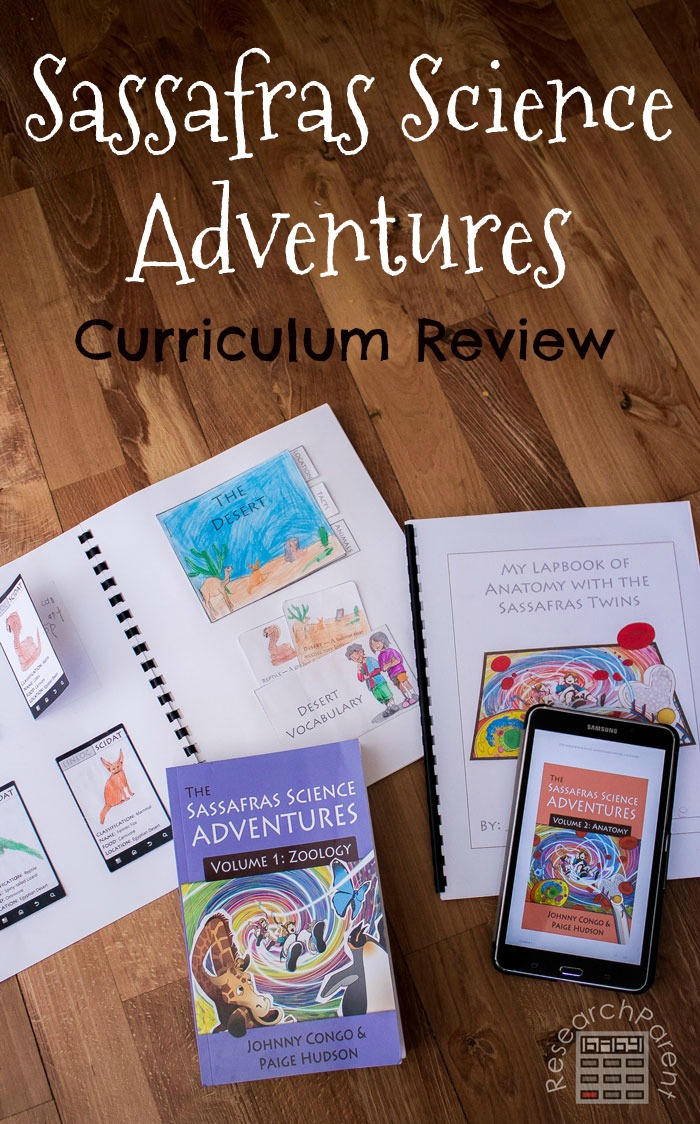
Product: Sassafras Science Adventures living book series
Company: Elemental Science
Recommended Age Range: Kindergarten, Elementary
Time Required: about 60 to 90 minutes per week
Difficulty: Program is easy to follow and story is fairly easy to understand even for early elementary. The science described can be fairly advanced, but full understanding is not necessary in order to use the curriculum.
Cost: $25 to $100 per volume depending on how much supplemental material you want. (Each volume lasts one semester and there are 4 volumes so far.)
Bottomline
In my opinion, all you really need to get nearly everything out of this program is the living book (the Kindle version is $10) and the lapbook for $15. I also highly recommend the audiobook if you spend a good amount of time in the car. This material lasts for 18 weeks or about a semester. Given that my son loves listening to the story, is being exposed to really complex science, and has produced quality interactive notebooks using the lapbook material over the course of the year, I feel like this science curriculum is hard to beat.
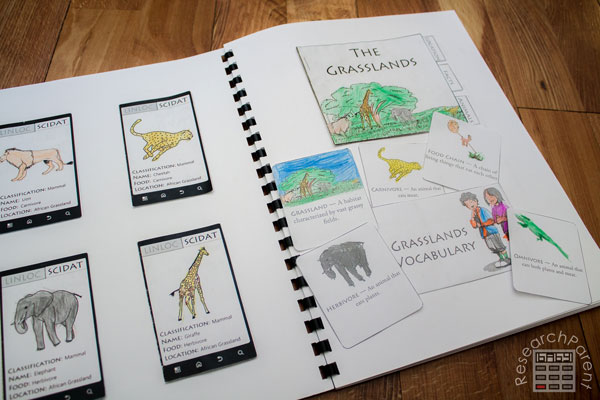
How We Use It
Over the past year, my son (a first grader) and I have worked our way through the first two volumes of Sassafras Science: Zoology and Anatomy. He has simultaneously used the lapbook materials to make a book for each of the two volumes. Usually, he colors the pictures for the lapbook material while I read-aloud from my Kindle or we listen to the audiobook. After he finishes listening to a section, we go back to the relevant parts of the book and I re-read the scientific parts, so he can pick what he found the most interesting. He tells me what he wants to write in his lapbook, I write the sentence on a piece of scratch paper, and he copies it into the appropriate part of his lapbook.
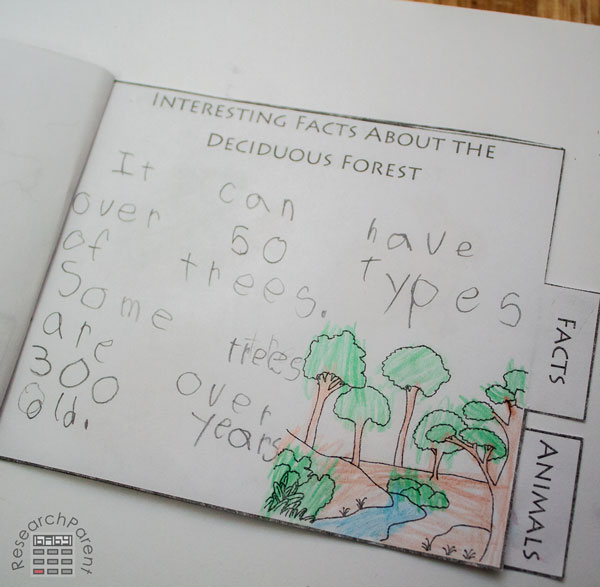
Instead of making actual lapbooks out of these pieces using file folders as suggested, I’ve chosen to use these lapbooking pieces in interactive notebooks. For each volume, I simply bind together 9 pieces of cardstock, then glue the pieces into the homemade notebook instead. (Have I mentioned that I love my binding machine? A detailed review and description of the many things I use it for can be found here.)

I’ll admit, very few of the curricula choices I made last summer have completely panned out. However, Sassafras is one of the few that we’ve really stuck with throughout the whole school year. If I pull him away from playing, he’s not always super excited to start his science, but he really does enjoy the story. Once he’s been drawn into the story, he’ll yell at his younger siblings to be quiet so he can hear. He doesn’t want to miss any parts.
How Long Does it Take?
If you do one chapter a week, the program lasts 18 weeks, which allows you to finish two volumes a year. Each chapter takes about 30 to 45 minutes to read (or listen to the audiobook). All the chapters are divided into two parts, so ideally we read half a chapter twice a week. I am glad that I bought the audiobook, because if we start falling behind, we’ll listen to that week’s chapter in the car on the way to and from activities. On a good week, we spend about 45 minutes on supplemental science activities in addition to just listening to the living book. (On a bad week, we’ll only spend about 15 to make sure my son’s lapbook is complete for the week.)
After we listen to a chapter, sometimes we’ll read about the same subjects in other books. The lapbooking guide provides booklists for each chapter, which I’m sure are great, but I’ve rarely used them. I’ve REALLY liked Picturepedia for providing great visuals of both zoology and anatomy. I’m sure it will come in handy with future volumes as well. For anatomy, we’ve also been using See Inside Your Body which my kids really like.
In addition to the lapbook material, the lapbook guide also includes ideas for a number of hands-on experiments or demonstrations. I don’t always make time for these, but they’re usually pretty easy to put together and my kids LOVE them. They were big fans of the gooeyness of the giraffe saliva experiment. Recently we did the kidney demonstration and I will never forget the way my 5-year-old daughter’s eyes lit up with glee when she realized the yellow liquid we collected at the end was supposed to represent urine.
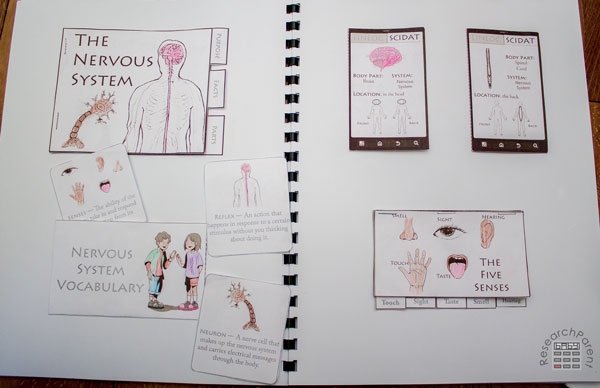
What about Kids of Multiple Ages?
One of the things that I adore most about this program is the way it serves such a wide audience. I’ll be honest…I don’t think my preschooler fully follows the story, even when we’re in the car and she has no other distractions. However, she definitely has a vague idea what’s going on and doesn’t complain listening to it. (My 2 year old, I am certain, has no clue what is going on.) My 7 year old loves these books. There is not a lot of character development or intricate plot twists, but there IS a lot of action-packed adventure which holds his interest. As an adult, they might not be my first choice of reading material, but I enjoy them too and have learned some science as well.
I feel like the science in the zoology book was right at my first grader’s level. It taught about different kinds of habitats, defense mechanisms, diets, and other aspects of zoology. I think he really was able to fully grasp maybe 90% of the science. The science in the anatomy book is at a much higher level. The story itself is just as entertaining, but whenever the “local expert” starts spouting off facts related to anatomy, even I get lost sometimes. However, that doesn’t really bother me. Maybe my son’s only retaining 20% of the science content, but since he’s not starting a pre-med program anytime soon, I don’t mind what goes over his head.
So far, we’ve only used the lapbook material, which I think is perfect for my 1st grader who is a new writer. However, they also have coloring pages, which would be appropriate for an even younger student (my preschooler colors them sometimes) and notebooking pages which would be appropriate for an older student. I could see myself repeating this curriculum in 5 years or so when my baby and toddler are older and having my oldest filling out the notebooking pages as an upper elementary student.
I should point out that while I don’t use the “Scidat Logbook” (the notebooking pages) or the teacher’s guides, I did buy them and I’m glad I own them. If my son and I are really lost about filling out a certain portion of the lapbook, the teachers guide has more info than the lapbooking guide that I can use for reference (though most of it is way too advanced for my 1st grader). As I said, I do plan to cycle through using these again someday, and I like the variety of options they have for documenting your learning experience with learners of different ages.
Do I Need to Do These In Order?
While we’re doing them in order, I don’t really think you need to. Like I said, there’s not really a lot of character development. The main premise is that two 12 year old twins are bad at science, so their crazy scientist uncle sends them off around the world on magical ziplines to learn about science from various local experts.
Not only do you not need to read the books in order, but even the topics within each book are fairly self-contained. They spend two chapters at each location learning about something specific (like the rainforest or circulatory system). At each location they have a different adventure that is usually completely unrelated to their adventures in previous locations. (There is an overarching, not-that-scary, man-with-no-eyebrows, “bad guy” that’s following them, but he only intermittently shows up and I have a feeling he’s not going to be resolved until the very last book in the series anyway, which hasn’t been written yet.)
Why Are They Called Living Books?
If you talk to a follower of the Charlotte Mason method of homeschooling, living books are really the only types of books kids should be using to learn. Personally, while I don’t follow it completely, I really like the Charlotte Mason philosophy and it was my search for living books that led me to this curriculum. What is a living book? Unlike a text book, which is a dry chronicle of facts, a living book is a book written by someone with a passion for a subject that makes the subject matter “come alive.” They frequently chronicle the lives of real people or characters and involve the reader’s emotions. They are both memorable and enjoyable.
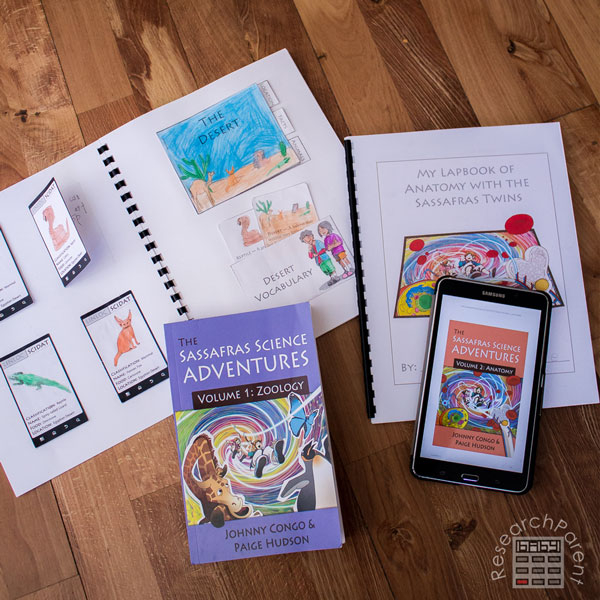
To summarize, here are some pros and cons I’ve found over the past year of using Sassafras Science Adventures:
Pros
- Easy-to-use
- Enjoyable for student (and parent)
- Provides lots of scientific information
- Great for families with kids of multiple ages
- Inexpensive
- Lots of hands-on suggestions
- Audiobook is great for learning on-the-go
- Results in attractive documentation of the child’s learning
Cons
- Science described can be a little complicated.
- If you fall behind (which we have a couple times), it can seem overwhelming to a young child to catch up.
- Most of the scientific information is not integral to the story, so theoretically a child reading the stories independently could skip over it.
- A lot of the time spent on this curriculum is spent listening to a fun, adventure story which does not completely pertain to science. (I don’t mind this.)
- There are aspects of the story that are not at all scientific, like the invisible ziplines. This doesn’t bother me as it makes the stories more entertaining, but be aware.
- The adventures are pretty far-fetched, especially the dangerous situations that the kids are allowed to be in, but my kids love it.
Overall, I don’t have a lot of complaints…The Sassafras twins have made science easy this past year and we’ll definitely continue to use them next year.
Here are all the volumes they have so far!
Volume 1: Zoology
Volume 2: Anatomy
Volume 3: Botany
Volume 4: Earth Science
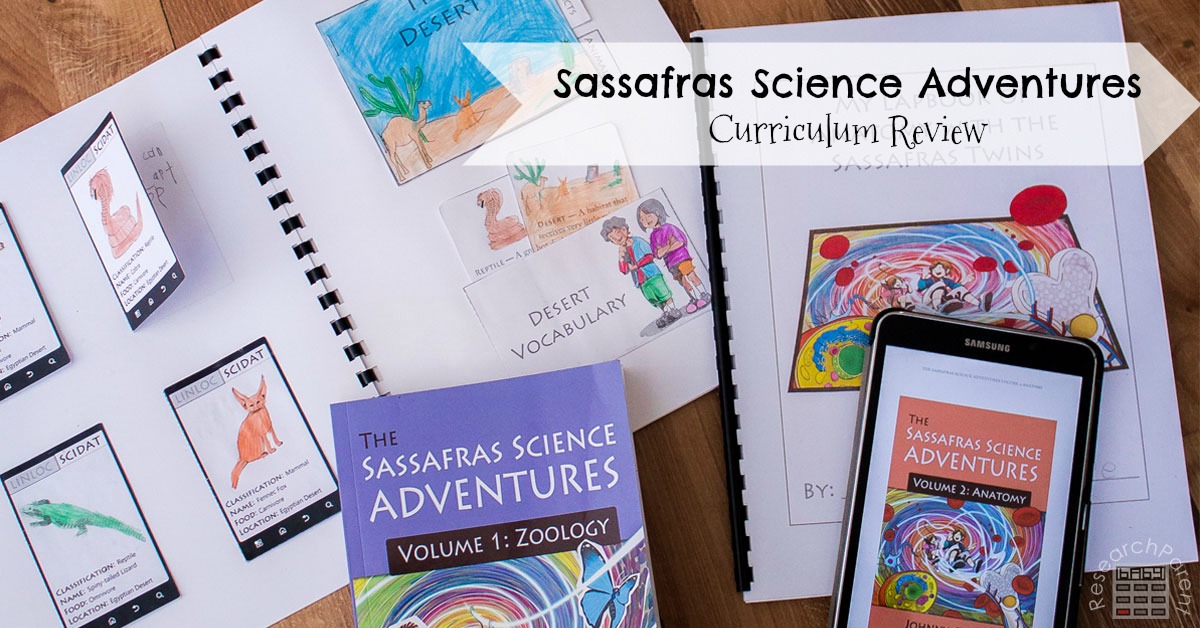
Related Links
Biology for Kids
Learning Activities for Kids
Play Activities for Kids


Awesome review! You answered all my questions. I’m looking at Sassafras for my 7yo and 10yo. We are bored with what we’ve been doing, I thought maybe the adventure story would help, and I love using living books.
I’m glad to be of help! Let me know if you have any more questions. If you’re interested in living book series, I’ve also been meaning to look into Quark Chronicles. I heard it was for slightly older kids than Sassafras, so maybe we’ll graduate to that one day. Good luck with whatever you decide!
I will have a 3rd grader and 1st grader next year. Would you say this is too young for the 3rd grader or could I use this for both of them?
I don’t think so! My son is in second grade now and we just finished the third volume (Botany) today. He and my kindergartner both still really like it. I’m definitely planning to use it with them next year as well. Honestly, the science that they cover is almost too advanced for their ages, but I’m just happy with whatever they happen to retain. I would recommend purchasing *just* the story and reading it to your kids to see if you like it first, though. It works really well for my family, because they love listening to the audiobook in the car and we drive a lot, but I have a friend that tried it and she and her kids thought it was too boring.
thanks for this info…I am looking into it- I am wanting something for my 7 year olds like this or nitty gritty science but with out a ton of prep.
I’m glad my review was helpful. We are still using Sassafras and are on Volume 4: Earth Science now. My kids (ages 6 and 8) really like listening to the story whenever we are in the car and the lapbook is just a small amount of work each week. I would like to incorporate more hands-on science in the future, but for now this is still working for us (mostly since it hardly requires any prep). Good luck!